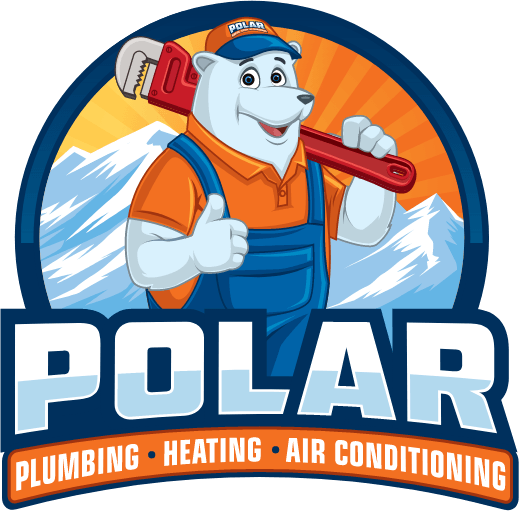Your home’s hot water system is an important appliance that provides you with a constant flow of hot water for daily use. However, some homeowners take their water heaters for granted until they break down. A malfunctioning or broken water heater can cause inconveniences and many expenses, which is why it’s vital to take good care of it. Proper care and appropriate water heater maintenance can extend the system’s lifespan and prevent expensive repairs or replacements.
A well-maintained water heater is less likely to need frequent repairs because most of the small technical issues are caught in time before they become major repairs. Here are six tips to help you keep your home’s water heater in tip-top shape and ensure you have a reliable and constant flow of hot water.
1. Drain the Tank Regularly
Over time, your water heater tank can accumulate sediment, reducing the unit’s overall efficiency. It can also lead to premature failure and shorten the lifespan of your hot water system, costing you a lot in the long run. Flushing the heater’s tank at least once a year can help clean the tank’s interior and remove the sediment buildup.
Regularly draining your hot water system’s tank can also help eliminate foul smells from stagnant water, improve heating speeds, and minimize water heater noise.
2. Insulate the Pipes and Tank
Insulating your heater’s tank can provide numerous benefits for a water heating unit. It prevents heat from escaping, meaning your water heating unit won’t have to overwork to warm the water. As a result, the water heater will need less energy to heat water, leading to reduced energy bills. Additionally, it reduces the amount of strain placed on the components of the unit, extending the life of your hot water system.
Not only is it helpful to insulate the heater’s tank, but it can also be beneficial to insulate all the pipes connecting to your hot water system. That is especially vital during winter when pipes may be exposed to cold temperatures. Insulating the water heater pipes can prevent water from freezing in your pipes and bursting pipes, which can lead to property damage. To insulate water heater pipes, your plumber can wrap them using pre-cut foam insulation. A professional will pay special attention to the pipes that run via unheated areas, such as attics and crawl spaces.
3. Lower the Unit’s Temperature
Some homeowners leave their water heating units set at a higher than necessary temperature, which makes their system consume more energy over time and may lead to higher utility costs. To ensure plenty of hot water for the whole family, a homeowner may even have set the temperature too high. A higher temperature setting can be dangerous because it can cause your water to get heated to an unsafe temperature, resulting in burns. It can also cause the unit to break down faster, leading to early or emergency replacements.
Generally, water heating units are set at 140° F by the manufacturer. However, you can accomplish most of the hot water uses in your home with a lower temperature. Experts recommend lowering your water heater to 120° F or even lower to maintain a safe temperature. Not only does lowering the temperature prevent scalding and burns, but it also reduces your energy expenses, and your hot water system will serve you for longer.
4. Check the Anode Rod
An anode rod is a vital component that helps prevent corrosion and rust in the hot water system’s tank. It attracts corrosive elements in your water so that it can corrode the component rather than the tank. Over time, this rod can get depleted, leaving your water heater tank vulnerable to corrosion and rust.
To prevent the corrosive materials from wreaking havoc on the interior of the heater’s tank, experts recommend checking and replacing the anode rod at least once a year. If the anode rod is more than 50% worn out, your plumbing professional will replace it with a new one during maintenance visits.
5. Check and Test the TPR Valve
The pressure relief valve is another bit of hot water system maintenance that you can contact a plumber to take care of. A TPR valve is a safety device that prevents extreme pressure from accumulating in your home’s water heater tank. Pressure within your tank occurs when your water expands and generates steam during heating.
The hotter your water gets, the greater the possibility of higher pressure. Some pressure may be normal and easily escape via your fixtures’ supply pipes. However, the water heater’s pressure relief valve activates when the produced pressure exceeds safe levels. When activated, the valve releases some steam and hot water until the pressure levels normalize.
Without this safety mechanism, there would be a risk of the heater’s tank bursting and even flooding your home. A bursting tank can also damage your residential property’s structure and cause serious injury, so keeping the TPR valve in great working condition is essential. Experts recommend testing the TPR valve every six to 12 months.
During maintenance checks, the water heater expert will discharge this valve several times to test its performance. The professional will also check for corrosion and leaks within the valve and alert you to any needed repairs to avoid severe damage to your water heater.
6. Get Annual Water Heater Inspection and Tune-Up
Like your vehicle, your hot water system needs regular inspection and maintenance from licensed and experienced professionals. These professionals are well-trained and know what to look for during inspection and maintenance visits. They will inspect and test parts of your hot water system that you cannot access safely.
Scheduling professional maintenance for your water heater may not be at the top of your home’s to-do list, but there many important reasons why it should be done. During maintenance, your plumber will remove sediment in your water heater. Removing mineral buildup can enhance the energy efficiency of your unit, which goes a long way in reducing your energy expenses. Your plumbing expert will also help identify issues that need repair early. This way, you can better anticipate the repairs you might need in the future to prevent a full system breakdown. A
Water heater maintenance also helps keep your manufacturer’s warranty valid. That means if your water heater malfunctions during the warranty period, you cannot take advantage of the repair services covered by the warranty unless you provide proof of annual maintenance.
Schedule Your Water Heater Maintenance Today
A well-maintained hot water system will help keep your home comfortable throughout the year. To keep your water heater in top shape, flush the tank regularly, test the pressure relief valve, replace its anode rod, lower the temperature, and insulate its pipes and tank. Don’t be a victim of a neglected or poorly maintained water heater. Schedule annual maintenance checks from our plumbing team at Polar Plumbing, Heating & Air Conditioning to help keep your hot water system in great shape.
We also offer toilet installations, heating, air quality, cooling, toilet repair, and faucet repair and replacement services throughout Newburgh, NY, and surrounding areas. Contact us to learn more about how to take care of your water heater or book your tune-up appointment.

